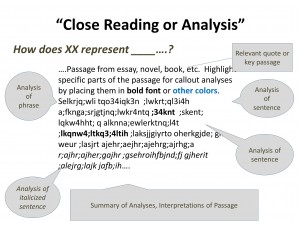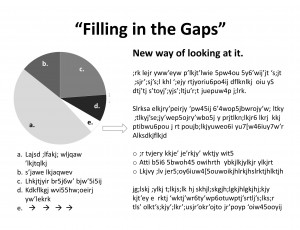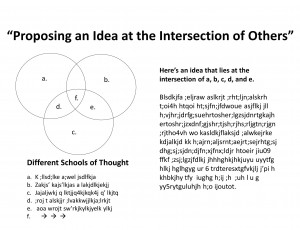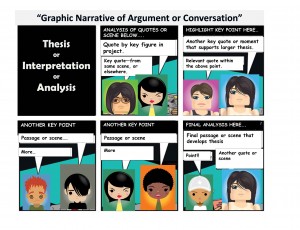Some years ago when I was co-directing a SoTL program that culminated in a poster presentation by all participants at a statewide conference, my colleagues in the arts and humanities often expressed discomfort with the genre. (Click here to see some good examples of these traditional posters, here from the University of Central Florida.) This is an unfamiliar genre in these disciplines, and some felt constrained by the conventions. In fact, a creative writer once said, “We can’t do posters in the humanities”–but then proceeded to make a fabulous one by breaking all the rules.
I was inspired by their frustrations resulting from a desire to remain true to their authentic ways of sharing knowledge and their authentic disciplinary identities. As convener of the “In Search of the Humanities in (IS)SoTL” panel featured at the 2009 conference of the International Society for the Scholarship of Teaching and Learning (ISSOTL), I shared a few examples I’d played with to illustrate how those of us in the humanities might represent our meaning-making and meaning-sharing through posters. (See our panel description in the highlighted box on page 27 of the conference program.)
I’ve shared these examples in a variety of venues, but haven’t had the chance to make them more readily accessible yet–until now. I recently adapted them to the classroom as authentic assignments for students in humanities classes. My goal was to show how the medium of posters can capture the rhetorical moves commonly (but not necessarily uniquely) made in the humanities, initiating a conversation not only about what knowledge has been constructed, but also how. In SoTL, this explicit representation and accompanying conversation about our processes would be valuable.
* Close reading or analysis of student text
* Responding to a previous idea by correcting a misconception, refuting an argument, revising a theory, etc.
* Arguing, interpreting, or analyzing inductively
* Filling in gaps or offering a new way of thinking about something
* Proposing ideas that lie at the intersection of several others, or synthesizing ideas
* Narrating, documenting chronology, or illustrating conversations
I’d love to see posters sessions at SoTL conferences with adaptations of these models.
–Nancy Chick







